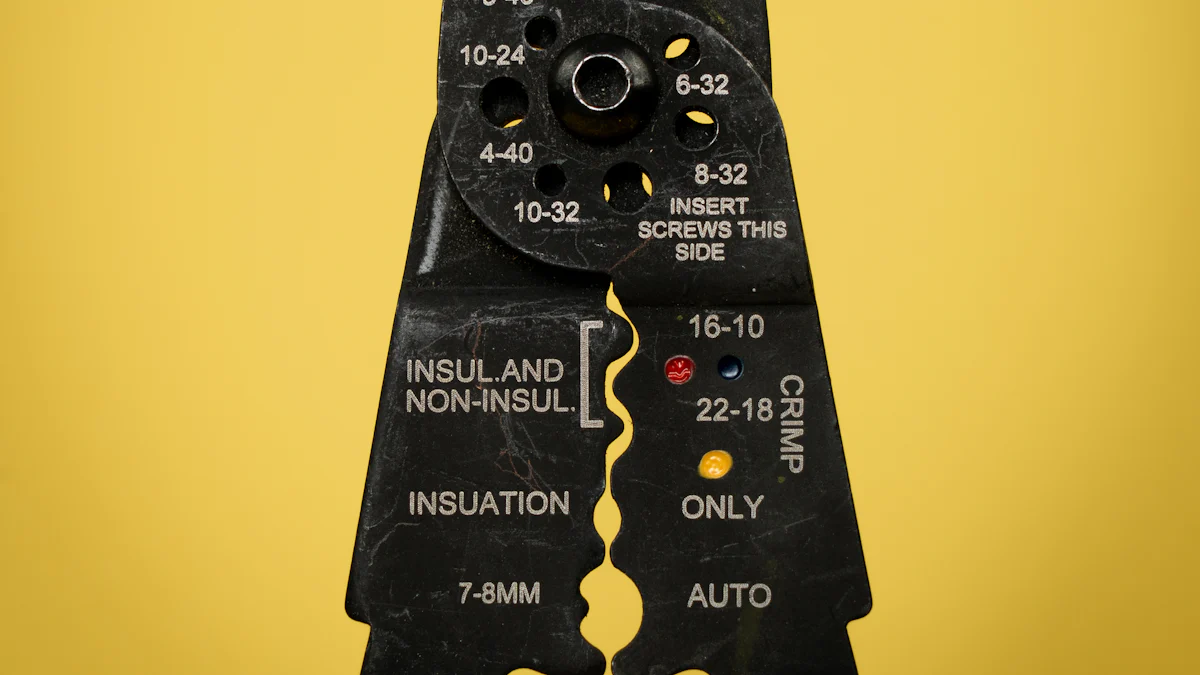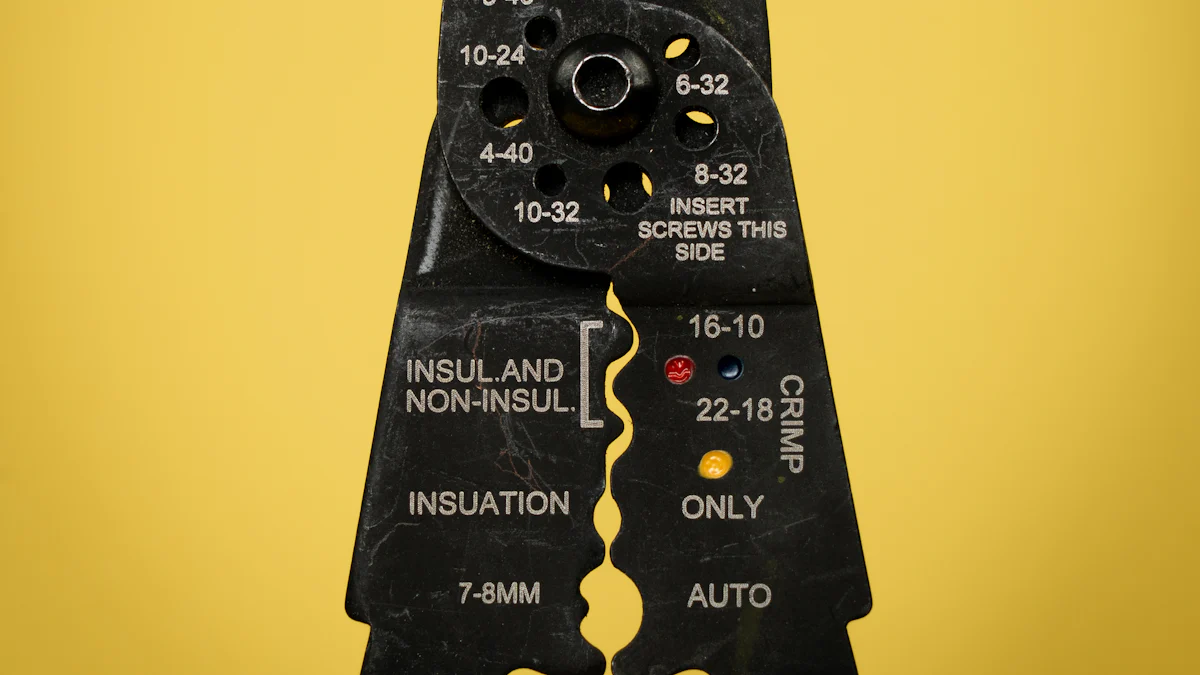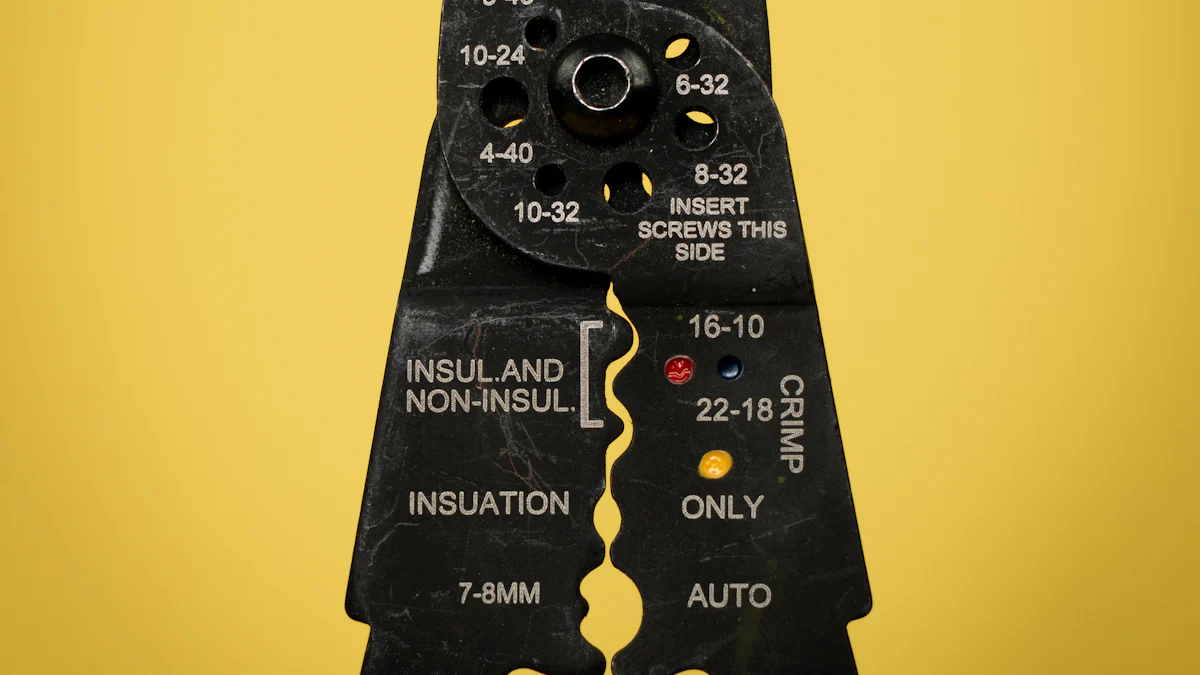Expert Reviews: Best Crimping Tools for Specific Applications

Choosing the right crimping tool is crucial for ensuring reliable and efficient connections in various industries. You need to understand the specific crimping applications to select the best tool for your needs. Whether you're working with electrical wiring, networking cables, or mechanical assemblies, each task demands a specialized tool. For instance, an insulated terminal crimper is essential for safe and effective electrical connections. The crimping tools market is expanding across multiple sectors, including automotive and telecommunications, reflecting their growing importance. As you explore these tools, consider how they can enhance your work's precision and safety.
Crimping Tools for Electrical Applications

When working with electrical wiring, selecting the right crimping tool ensures secure and efficient connections. You need to understand the specific tools available for different tasks to achieve optimal results.
Top Tools for Electrical Wiring
Non Insulated Terminal Crimper: Features and Benefits
A non insulated terminal crimper is essential for creating strong connections without insulation. This tool is perfect for applications where insulation is not required, such as in automotive or industrial settings. Its design allows you to apply precise pressure, ensuring a tight and reliable connection. The simplicity of this tool makes it easy to use, even in confined spaces. You can rely on its durability for repeated use, making it a cost-effective choice for many professionals.
Insulated Terminal Crimper: Features and Benefits
For tasks requiring insulation, the insulated terminal crimper is your go-to tool. It provides a safe and effective way to connect wires while maintaining the integrity of the insulation. This tool is crucial for preventing electrical shorts and ensuring safety in environments where insulation is necessary. Its ergonomic design reduces hand fatigue, allowing you to work efficiently over extended periods. The insulated terminal crimper is versatile, accommodating various wire sizes and types, making it a valuable addition to your toolkit.
Comparison of Electrical Crimping Tools
Non Insulated vs Insulated Terminal Crimper
Choosing between a non insulated and an insulated terminal crimper depends on your specific needs. The non insulated terminal crimper excels in situations where insulation is unnecessary, offering simplicity and ease of use. In contrast, the insulated terminal crimper is indispensable for maintaining safety and preventing electrical hazards in insulated applications. Both tools provide reliable connections, but their applications differ significantly.
Key Considerations for Electrical Use
When selecting a crimping tool for electrical applications, consider the following:
Application Requirements: Determine whether insulation is necessary for your project.
Tool Design: Look for ergonomic designs that reduce fatigue during prolonged use.
Durability: Choose tools made from high-quality materials for long-lasting performance.
Versatility: Ensure the tool can accommodate various wire sizes and types.
By understanding these key considerations, you can select the most suitable crimping tool for your electrical projects, ensuring safety and efficiency.
Crimping Tools for Networking Applications

In networking, selecting the right crimping tool is essential for ensuring reliable connections. You need tools that can handle the specific demands of network cable crimping. Let's explore some of the best options available.
Best Tools for Network Cable Crimping
EZ-RJPRO Heavy Duty Crimp Tool: Features and Benefits
The EZ-RJPRO Heavy Duty Crimp Tool stands out for its robust design and versatility. This tool integrates a built-in wire cutter and stripper, streamlining the cable termination process. Its synchronized handles and steel reinforcement provide added stability, ensuring a complete crimp cycle. You will appreciate its ability to deliver precise and consistent results, making it ideal for high-volume jobs. The EZ-RJPRO is perfect for professionals who require a reliable tool for frequent use.
ENGINEER Precision Crimping Pliers: Features and Benefits
The ENGINEER Precision Crimping Pliers offer exceptional accuracy for specific tasks. These pliers come with detailed instructions, making them user-friendly even for beginners. You can rely on their precision for tasks that demand meticulous attention to detail. The ergonomic design reduces hand fatigue, allowing you to work comfortably over extended periods. These pliers are a valuable addition to any toolkit, especially for those who prioritize precision in their crimping applications.
Comparison of Networking Crimping Tools
EZ-RJPRO vs ENGINEER Precision
When comparing the EZ-RJPRO and ENGINEER Precision tools, consider your specific needs. The EZ-RJPRO excels in durability and versatility, making it suitable for high-volume tasks. Its all-in-one design simplifies the crimping process, saving you time and effort. On the other hand, the ENGINEER Precision Pliers focus on accuracy and ease of use, ideal for tasks requiring detailed work. Both tools offer unique advantages, so your choice depends on whether you prioritize volume or precision.
Key Considerations for Networking Use
When selecting a crimping tool for networking applications, keep these factors in mind:
Tool Stability: Ensure the tool provides stability during the crimping cycle for reliable results.
Ease of Use: Look for tools with ergonomic designs to reduce fatigue during prolonged use.
Versatility: Choose tools that can handle various cable types and sizes.
Precision: Consider tools that offer precise wire trimming and pin setting for optimal performance.
By understanding these considerations, you can choose the most suitable crimping tool for your networking projects, ensuring efficiency and reliability.
Crimping Tools for Mechanical Applications
In mechanical settings, selecting the right crimping tool is vital for creating secure and durable connections. You need tools that can handle the specific demands of mechanical crimping applications. Let's explore some of the top tools available for these tasks.
Recommended Tools for Mechanical Crimping
Steel Cable Sleeve Crimper: Features and Benefits
The Steel Cable Sleeve Crimper is a robust tool designed for heavy-duty applications. You will find it particularly useful for crimping steel cables in construction and industrial environments. This tool provides a strong grip, ensuring that the sleeve holds the cable securely. Its manual operation offers portability and ease of use, making it ideal for on-site tasks. The durability of this crimper ensures long-lasting performance, even under frequent use. You can rely on its precision to deliver consistent results, enhancing the safety and reliability of your mechanical connections.
Metal Cable Crimps: Features and Benefits
Metal Cable Crimps are essential for creating strong and reliable connections in various mechanical applications. These crimps are versatile, accommodating different cable sizes and types. You will appreciate their ability to withstand high tension, making them suitable for demanding environments. The design of metal cable crimps allows for easy installation, reducing the time and effort required for each task. Their durability ensures that connections remain secure over time, providing peace of mind in critical applications.
Comparison of Mechanical Crimping Tools
Steel Cable Sleeve vs Metal Cable Crimps
When choosing between a steel cable sleeve crimper and metal cable crimps, consider your specific needs. The steel cable sleeve crimper excels in applications requiring heavy-duty performance and portability. It is perfect for tasks where manual operation is preferred. In contrast, metal cable crimps offer versatility and ease of installation, making them suitable for a wide range of applications. Both tools provide reliable connections, but their uses differ based on the demands of your project.
Key Considerations for Mechanical Use
When selecting a crimping tool for mechanical applications, keep these factors in mind:
Application Requirements: Determine the specific demands of your project, such as cable size and type.
Tool Durability: Choose tools made from high-quality materials to ensure long-lasting performance.
Ease of Use: Look for tools that offer straightforward operation to reduce installation time.
Portability: Consider whether you need a tool that is easy to transport for on-site tasks.
By understanding these considerations, you can select the most suitable crimping tool for your mechanical projects, ensuring efficiency and reliability.
In summary, selecting the right crimping tool is essential for achieving reliable and efficient connections across various applications. You should consider your specific needs, whether it's electrical, networking, or mechanical tasks.
See Also
Exploring Various Crimping Tool Varieties
Discovering Crimper Functions and Applications
Best 3 Hydraulic Hose Crimpers for All Requirements
Conventional Low Voltage Options versus Adaptable DC Power Distribution: An In-depth Comparison
Innovative Device for DC Power Distribution: Transforming Power Consumption
